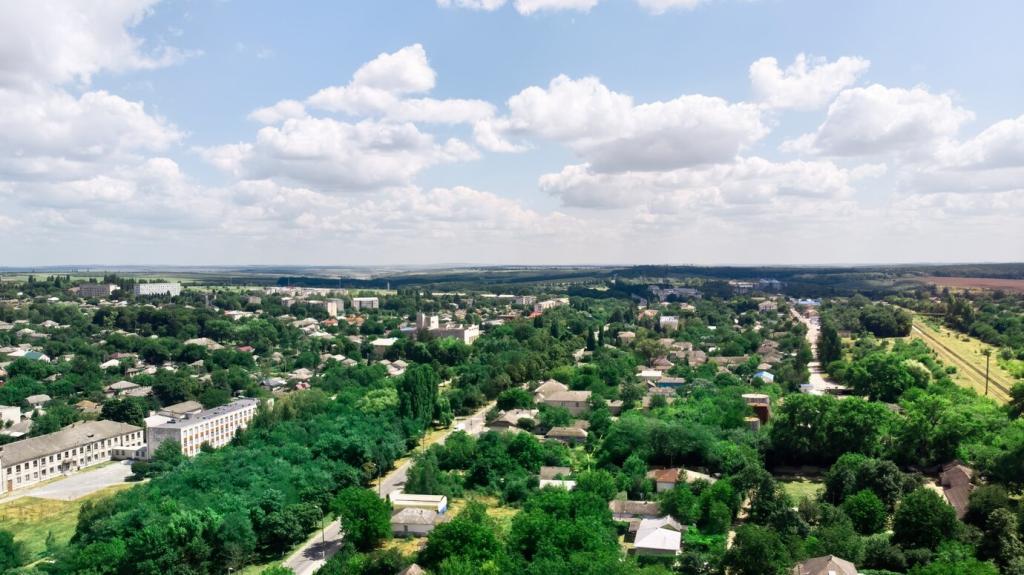Sustainable Energy Infrastructure for Urban Growth
Sustainable energy infrastructure is a vital cornerstone for cities experiencing rapid growth and development. As urban populations increase, the demand for reliable, clean, and efficient energy systems becomes ever more critical. Sustainable solutions not only support economic activity but also contribute to environmental stewardship and social well-being. Forward-thinking cities are prioritizing renewable energy integration, innovative distribution networks, and future-ready policies to meet their growing needs. This page explores key aspects of sustainable energy infrastructure in the context of modern urbanization.

Solar Energy Deployment
Urban areas are increasingly turning to photovoltaic technology to harness the power of the sun. Rooftop panels, solar canopies over parking lots, and building-integrated photovoltaics are becoming common sights. By utilizing available real estate on buildings and unused urban surfaces, cities can generate substantial quantities of electricity locally, reducing transmission losses and offering resilience against centralized grid disruptions. Solar deployment also drives innovation in local job markets, creating opportunities for workers involved in installation, maintenance, and system monitoring. As storage technologies improve, the reliability of solar power in meeting peak urban energy demands is also on the rise.
Wind Power Integration
Although wind turbines are traditionally associated with rural or offshore settings, urban wind power solutions are gaining ground. Advances in turbine design have made smaller, quieter, and more efficient models suitable for deployment within city limits. Urban wind power can complement solar generation, especially during periods or locations with limited sunlight but ample wind activity. By carefully selecting sites such as high-rise rooftops, bridges, or specially designed towers, cities can harness wind energy with minimal impact on urban landscapes. The synergy between wind and solar sources maximizes renewable energy penetration and contributes to a diversified and stable urban energy mix.

Upgrading the Urban Grid for Sustainability
Smart grids utilize advanced sensors, automation, and real-time data analytics to optimize electricity flow throughout cities. These systems can dynamically balance supply and demand, quickly identify and isolate faults, and enable flexible pricing mechanisms that incentivize sustainable consumption. Digitalization allows utilities and city administrators to better predict peak usage periods and integrate distributed energy resources, such as rooftop solar or community wind projects. Enhanced connectivity also empowers residents and businesses to monitor and adjust their own energy usage, driving collective progress toward urban sustainability goals.
Policy and Planning for Sustainable Urban Growth
Well-designed regulations and fiscal incentives are essential tools for accelerating the transition to sustainable energy. Policies such as carbon pricing, renewable portfolio standards, and feed-in tariffs encourage utilities and private entities to prioritize clean generation. Local governments can promote these efforts by streamlining permitting for renewable projects and providing tax breaks or rebates for energy-efficient buildings or renewable installations. Such support lowers the financial barriers for adopting new technology, spurs market competition, and fast-tracks urban sustainability goals.
Integrating sustainable energy infrastructure effectively requires thoughtful urban planning and zoning rules. For example, cities can require new developments to meet minimum green building standards or mandate solar-ready roofing on commercial and residential structures. Zoning can designate sites for wind turbines, district heating, or energy storage facilities, ensuring these installations coexist harmoniously with other urban uses. Strategic planning also anticipates the future needs of growing populations, guiding infrastructure investments that support both economic vitality and environmental quality.
Meaningful participation from residents, businesses, and community organizations ensures that sustainable energy initiatives garner broad support and address local needs. Public engagement helps shape policies that are practical and equitable, while educational programs empower citizens to contribute to energy conservation and demand management. Through transparent decision-making processes and collaborative partnerships, cities can harness the collective intelligence and creativity of their communities. This inclusive approach not only improves outcomes but also builds lasting public trust in the quest for urban sustainability.

